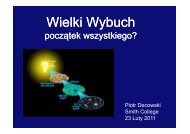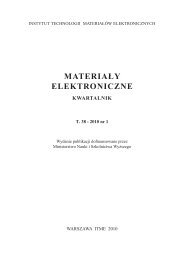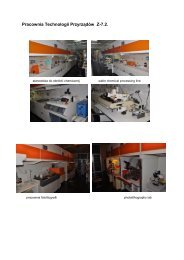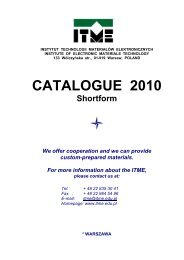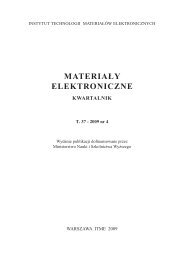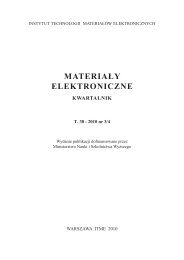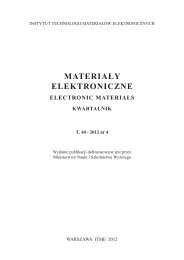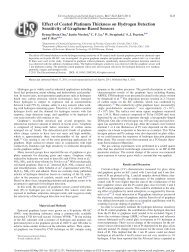Nr 1 - ITME
Nr 1 - ITME
Nr 1 - ITME
Create successful ePaper yourself
Turn your PDF publications into a flip-book with our unique Google optimized e-Paper software.
W. Stęplewski, G. Kozioł, J. Borecki<br />
on the results obtained using these control methods we try to describe the influence<br />
of stencil aperture shapes and printing parameters on transfer efficiency of solder<br />
paste.<br />
Stencil apertures clogging (Fig. 3) was also observed. This factor can cause the<br />
inaccuracy of solder paste printing and can be a source of failures after soldering<br />
process.<br />
Fig. 3. Stencil apertures clogging.<br />
Rys. 3. Pozostawanie pasty w oknach szablonu.<br />
4. INFLUENCE OF STENCIL MATERIALS AND STENCIL<br />
FORMING TECHNIQUE<br />
The experimental trials were performed in fractional mode. In summary, nine<br />
combinations (experimental trials) with all variables were done. For each combination<br />
the five repetitions were carried out for four types of stencils. The stencils apertures<br />
have the same shape and size as the pad for the components. In all tests a lead free<br />
solder paste based on the SAC 305 alloy, powder type 4 (20-38 µm grains) and flux<br />
ROL1 was used.<br />
During the tests it was noticed that the stencils made with nickel electroformed<br />
technology gave the best results in fine pitch devices assembly. Laser cut stainless<br />
steel stencil had comparable utilize properties. For these two types of stencils the<br />
best transfer efficiency was obtained (Figs. 4-6). Presented average results were<br />
77




